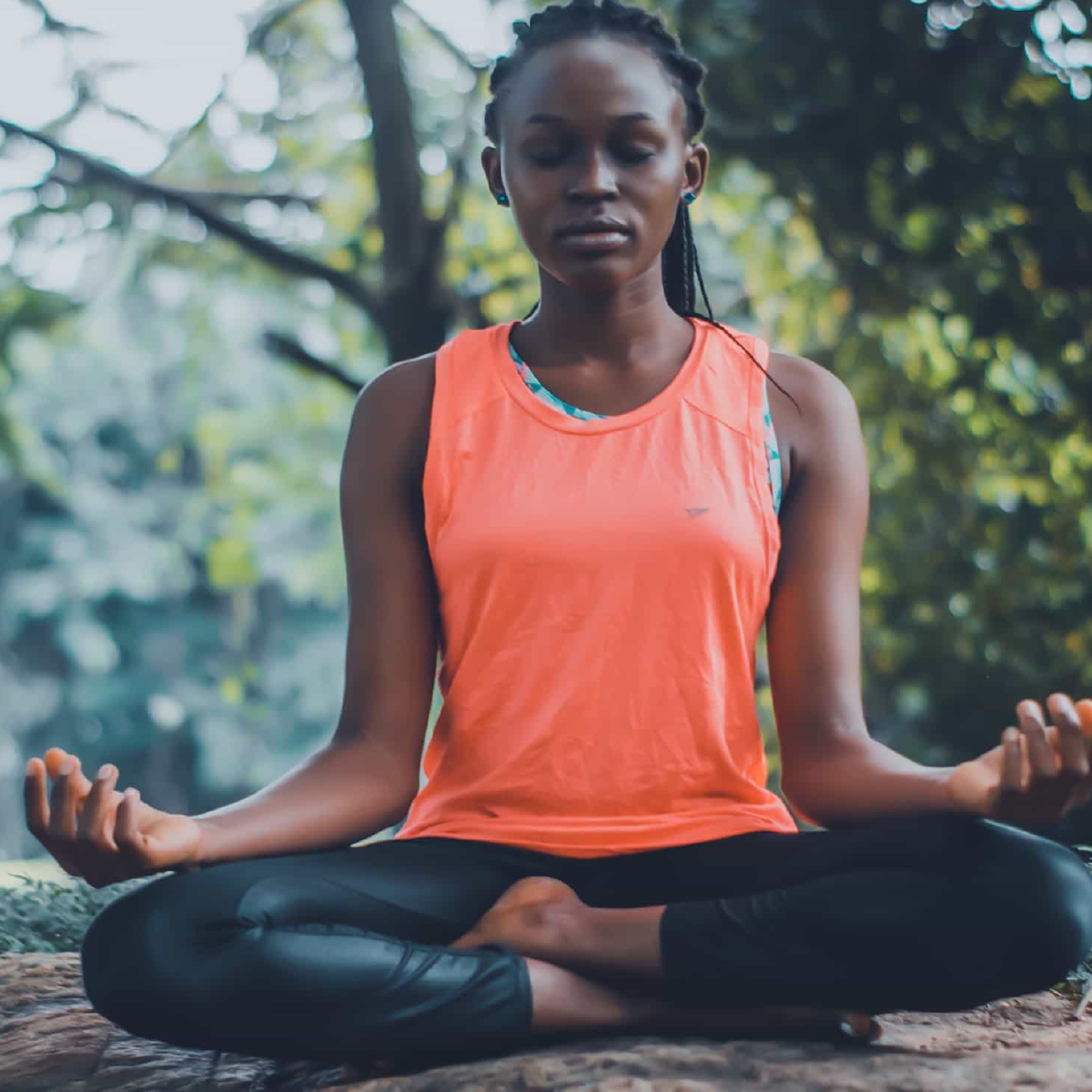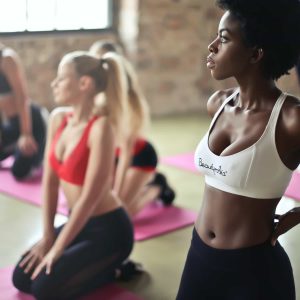
Understand Which Fitness Component Yoga Targets!
Here’s a question you’ve probably asked yourself: is yoga a valid form of exercise? Well, the answer may surprise you. Yoga can provide an amazing range of health benefits, but the main thing to know is which fitness components it targets. In this article, we’ll look at what different types of yoga are best for different goals, helping you to understand which fitness components yoga targets. So let’s get started!
List of Content
- 1. What is Fitness?
- 2. Benefits of Yoga
- 3. Types of Yoga
- 4. How Yoga Targets Fitness
- 5. Which Fitness Component Does Yoga Target?
- 6. Ways to Incorporate More Yoga into Your Workout Routine
- You Ask, I answer

1. What is Fitness?
Fitness is the ability to be physically active and healthy. It encompasses a range of components such as muscle strength, flexibility, cardiovascular health, and body composition.
Muscle Strength
Muscle strength is the extent to which muscles can exert force against external objects. It involves performing muscle-strengthening exercises such as weight lifting, body weight exercises, and resistance training. These activities help increase muscle mass, enhance power, improve bone and joint stability, and support the body’s structure.
Flexibility
Flexibility is the ability to move joints and muscles through their full range of motion. Stretching and yoga are exercise activities that can help improve flexibility. This component of fitness increases mobility, reduces stress, and helps prevent injury.
Cardiovascular Health
Cardiovascular health refers to the health of the heart, blood vessels, and lungs, which are necessary for efficient oxygen circulation throughout the body. Aerobic activities such as running, swimming, or cycling help reduce the risk of cardiovascular disease by improving heart and lung health.
Body Composition
Body composition is the balance between body fat and muscle mass. Regular physical activity is important to keep weight in check and reduce the risk of developing chronic diseases. To keep body composition healthy, the key is to eat a nutritious and balanced diet in addition to getting regular physical activity.

2. Benefits of Yoga
Yoga is an amazing practice that can help improve your physical and mental wellbeing. Here are some of the benefits of regularly practicing yoga.
1. Improved Flexibility: Through regular yoga practice, you can improve your mobility and flexibility. You can create a broader range of motion, increase your range of movement and protect your body from injuries.
2. Improved Stress Management: Yoga is a great way to relieve stress. Its meditative and calming elements can help you create a better sense of balance in your life. With regular practice, you can lower your blood pressure and heart rate, making you more relaxed and peaceful.
3. Improved Cardiovascular Health: Yoga can help increase your lung capacity and help improve your overall cardiovascular health. Regular practice can help the flow of oxygen throughout your body, reducing the risk of illnesses such as heart disease.
4. Improved Strength and Balance: Yoga is an excellent form of exercise that can help improve your strength and balance. It can help you become more aware of your body and help you create better equilibrium and stability.
The are endless. Regular practice can bring more balance and mindfulness to your life, helping you become healthier and happier.
3. Types of Yoga
When it comes to yoga, it is essential to understand there are multiple types. Each type has its own set of benefits and can help you further develop your yoga practice in different ways. Here are some of the main you should get familiar with:
- Hatha Yoga – Hatha yoga is known as the most widely practiced form of yoga in the world. It is generally a slower practice which focuses on synchronizing the breath with postures or asanas. This type of yoga prepares the body for meditation and calming the mind.
- Ashtanga Yoga – This type of yoga revolves around a dynamic series of poses that builds strength, flexibility, and stamina. Ashtanga yoga classes follow a specific order of postures and typically begin with Sun Salutations to warm up the muscles.
- Restorative Yoga – Restorative yoga is perfect for anyone looking to relax and de-stress. This type of yoga uses props to aid in relaxation and to help restore the body to its natural balance. The poses are gentle and supportive, perfect for beginners.
- Vinyasa Yoga – Vinyasa yoga is perfect for those who like to practice at a faster pace. The classes are focused on moving quickly through postures while linking the breath to the movements. This type of yoga helps to tone and shape the entire body as you improve flexibility and strength.
Each type of yoga will help you progress your yoga practice in a unique way. You may decide to focus on only one type, or you can mix and match to find the style that fits you best. No matter your fitness level or yoga experience, there is a type of yoga that will be perfect for you.
Before embarking on a yoga practice, it is important to understand the main and its benefits to ensure you pick the right one. Many studios offer classes in each type, so it is a good idea to try them out and see which fits your fitness and lifestyle the best.
4. How Yoga Targets Fitness
Yoga is an effective way to target fitness due to its holistic nature. It is a practice that works on both the physical and mental elements in order to gain optimal results. Moreover, it is designed to increase muscle strength, flexibility, and overall fitness.
Some of the physical benefits of yoga that help the body become fit are:
- Improvements in posture and balance
- Weight management
- Strengthening of muscles and bones
- Cardiovascular endurance
The mental benefits are just as significant when it comes to fitness. Yoga can help to reduce stress and anxiety, improve mental clarity, and help to develop a positive attitude and outlook on life.
Yoga also helps to develop discipline and perseverance in order to become fit and healthy. This is done through the use of asanas and meditative practices. These practices require consistency and dedication in order to get the best physical and mental results.
5. Which Fitness Component Does Yoga Target?
Yoga is one of the most popular fitness activities practiced by people around the world. Not only does it promote relaxation and stress relief, but it also provides a wealth of other health benefits. So which fitness components does yoga specifically address?
Strength – There are many yoga postures that provide a great challenge to build strength and tone your muscles. Standing postures such as Warrior pose and Triangle pose strengthen your arms, leg and core.
Flexibility – Flexible muscles and joints lead to improved mobility and active range of motion. Certain yoga postures increase the range of motion in your joints and reduce stiffness in your body with stretching movements.
Endurance and Cardio – If you want to build cardiorespiratory fitness, Vinyasa style yoga classes are a great way to increase your heart rate and stamina. With a combination of physical postures, breath work and mental focus, you will find it easier to practice more challenging postures.
Balance – Practicing yoga postures with focus on balance will improve your overall stability. Standing poses like Tree Pose and stability postures like Half Moon offer a great challenge to your steadiness.
6. Ways to Incorporate More Yoga into Your Workout Routine
Yoga is a great way to increase both flexibility and strength. Plus, it’s a great way to relax and de-stress to your workout. Here are 6 ways you can incorporate more yoga into your workout routine:
- Take a yoga class. Taking a yoga class can help you learn the basics, focus on your form, and understand how to incorporate breath and movement into your practice.
- Focus on stretching. Taking time to stretch after a workout can help you reduce soreness and loosen tight muscles.
- Try yoga poses in between your cardio and weight-training exercises. Doing so can help you reduce fatigue and improve your form.
- Do yoga in the mornings. Waking up early and doing yoga before work can help you set a positive tone for the rest of your day.
- Practice yoga in the evenings. Consistency is key, so try practicing yoga at the same time every night.
- Do yoga outdoors. Getting in touch with nature is a great way to relax and maintain focus on your practice.
By following these tips, you can easily incorporate more yoga into your routine and reap all of the physical and mental benefits that come with it.
Yoga is a great way to stay fit and healthy, and it’s a great complement to any workout routine. So, try these tips and start incorporating more yoga into your routine today!
You Ask, I answer
Q: What fitness component does yoga target?
A: Yoga can be used to target all five components of physical fitness: cardiovascular endurance, muscular strength, muscular endurance, flexibility, and body composition.
Q: How can I use yoga to improve my cardio endurance?
A: Incorporate more dynamic sequences into your practice, or practices that move quickly with minimal rest time. Yoga postures such as Sun Salutations are great cardiovascular exercises and, done with purposeful breathing, can provide amazing cardiovascular benefits.
Q: Does yoga help to build strength?
A: Absolutely! During a yoga session, many of the postures involve using your own bodyweight to build strength. Most yoga postures, such as Plank, small boat (Navasana), Chair (Utkatasana), and Upward Facing Dog (Urdhva Mukha Svanasana) require strong muscle activation to maintain balance and alignment.
Q: How can I improve my flexibility with yoga?
A: Yoga postures that involve stretching and lengthening of the muscles help to improve flexibility and range of motion. Deep stretching postures such as Cobra (Bhujangasana) or Downward-Facing Dog (Adho Mukha Svanasana) are excellent for increasing flexibility.
Q: Is yoga a good way to manage my body composition?
A: Yes! Certain yoga postures and practices, such as power yoga, vinyasa, or hot yoga, can be used to burn calories and help you manage your body composition.
It’s essential to understand which fitness components yoga targets, so that you can choose the right mode of exercise for your own individual needs. There’s no one-size-fits-all answer, but hopefully this article has given you a better understanding of yoga and the different fitness components it can upkeep. Namaste!


